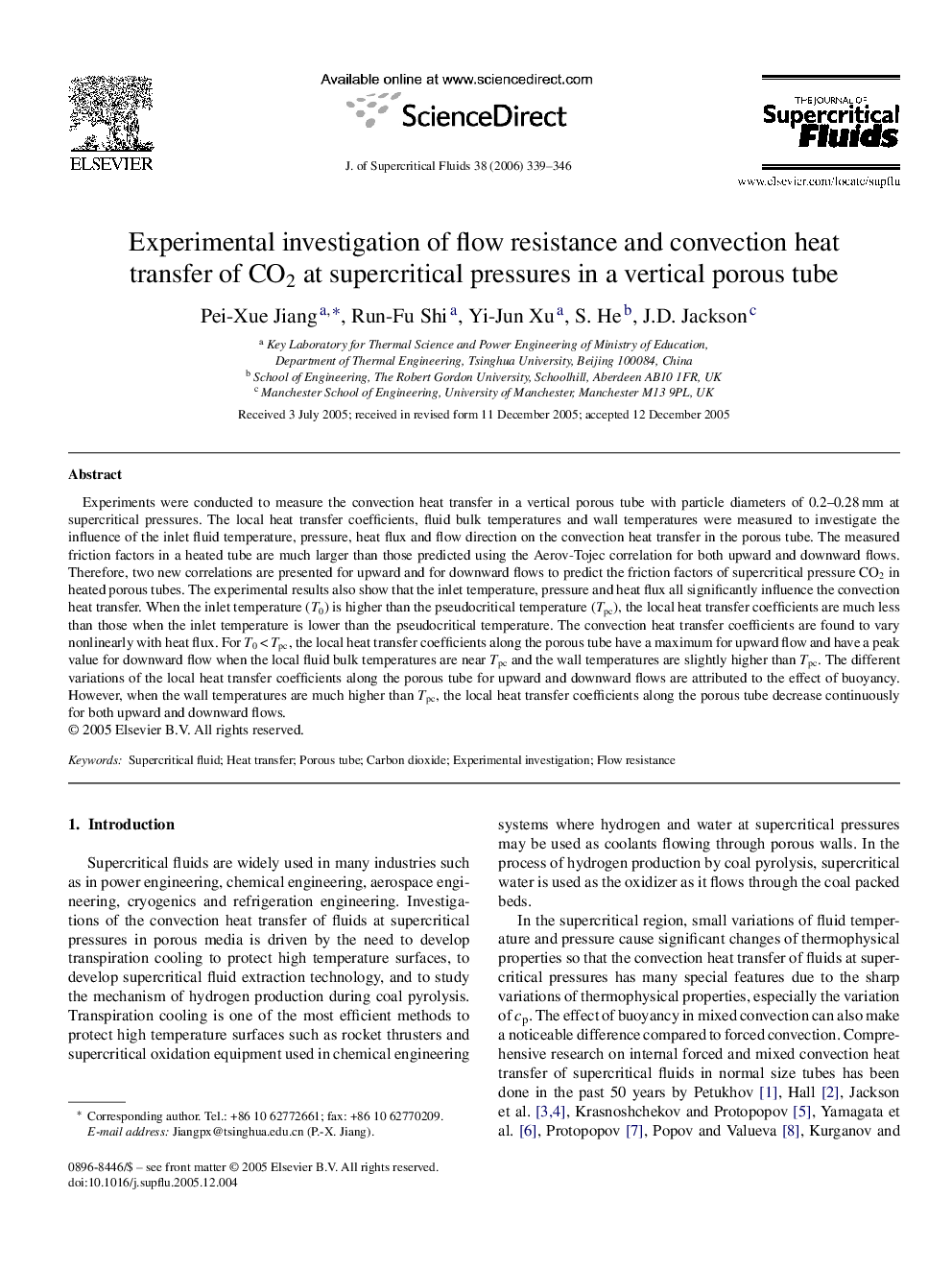| Article ID | Journal | Published Year | Pages | File Type |
|---|---|---|---|---|
| 232229 | The Journal of Supercritical Fluids | 2006 | 8 Pages |
Experiments were conducted to measure the convection heat transfer in a vertical porous tube with particle diameters of 0.2–0.28 mm at supercritical pressures. The local heat transfer coefficients, fluid bulk temperatures and wall temperatures were measured to investigate the influence of the inlet fluid temperature, pressure, heat flux and flow direction on the convection heat transfer in the porous tube. The measured friction factors in a heated tube are much larger than those predicted using the Aerov-Tojec correlation for both upward and downward flows. Therefore, two new correlations are presented for upward and for downward flows to predict the friction factors of supercritical pressure CO2 in heated porous tubes. The experimental results also show that the inlet temperature, pressure and heat flux all significantly influence the convection heat transfer. When the inlet temperature (T0) is higher than the pseudocritical temperature (Tpc), the local heat transfer coefficients are much less than those when the inlet temperature is lower than the pseudocritical temperature. The convection heat transfer coefficients are found to vary nonlinearly with heat flux. For T0 < Tpc, the local heat transfer coefficients along the porous tube have a maximum for upward flow and have a peak value for downward flow when the local fluid bulk temperatures are near Tpc and the wall temperatures are slightly higher than Tpc. The different variations of the local heat transfer coefficients along the porous tube for upward and downward flows are attributed to the effect of buoyancy. However, when the wall temperatures are much higher than Tpc, the local heat transfer coefficients along the porous tube decrease continuously for both upward and downward flows.
